We’re always on the hunt for a comfortable pair of shoes. A style that offers comfort without compromising on style. While it’s easy to be focused on the size or design of your shoes, the most important aspect is the material of your shoes.
The material will make or break the design. It can make you feel like you’re walking on a cloud or give you the support you need to stay on your feet all day.
This ultimate guide takes you through the most common materials used for shoes, including different types of leather, synthetics, and textiles.
 Popular materials used to make shoes include leather, textiles, synthetics, rubber, and foam (Credit: LauraVl / Shutterstock)
Popular materials used to make shoes include leather, textiles, synthetics, rubber, and foam (Credit: LauraVl / Shutterstock)
It’s your go-to reference to help you find the best material that matches your aesthetic without causing too much discomfort. Shoe materials are easy to overlook, but they’re the foundation of your shoes.
Bookmark this guide to visit again when searching for your next shoes.
What materials are used to make shoes?
Shoe designers have dozens of types of materials to choose from. The most common materials used to make shoes include foam, rubber, plastic, textiles, and synthetics.
Each brand and designer meticulously selects materials to breathe life into their shoe designs, transforming mere sketches into tangible creations.
Designers also consider where and when the shoes will be worn. You’ll need a different material for running shoes versus ballet shoes. Every material has a specific use and gives the shoe its unique characteristics.
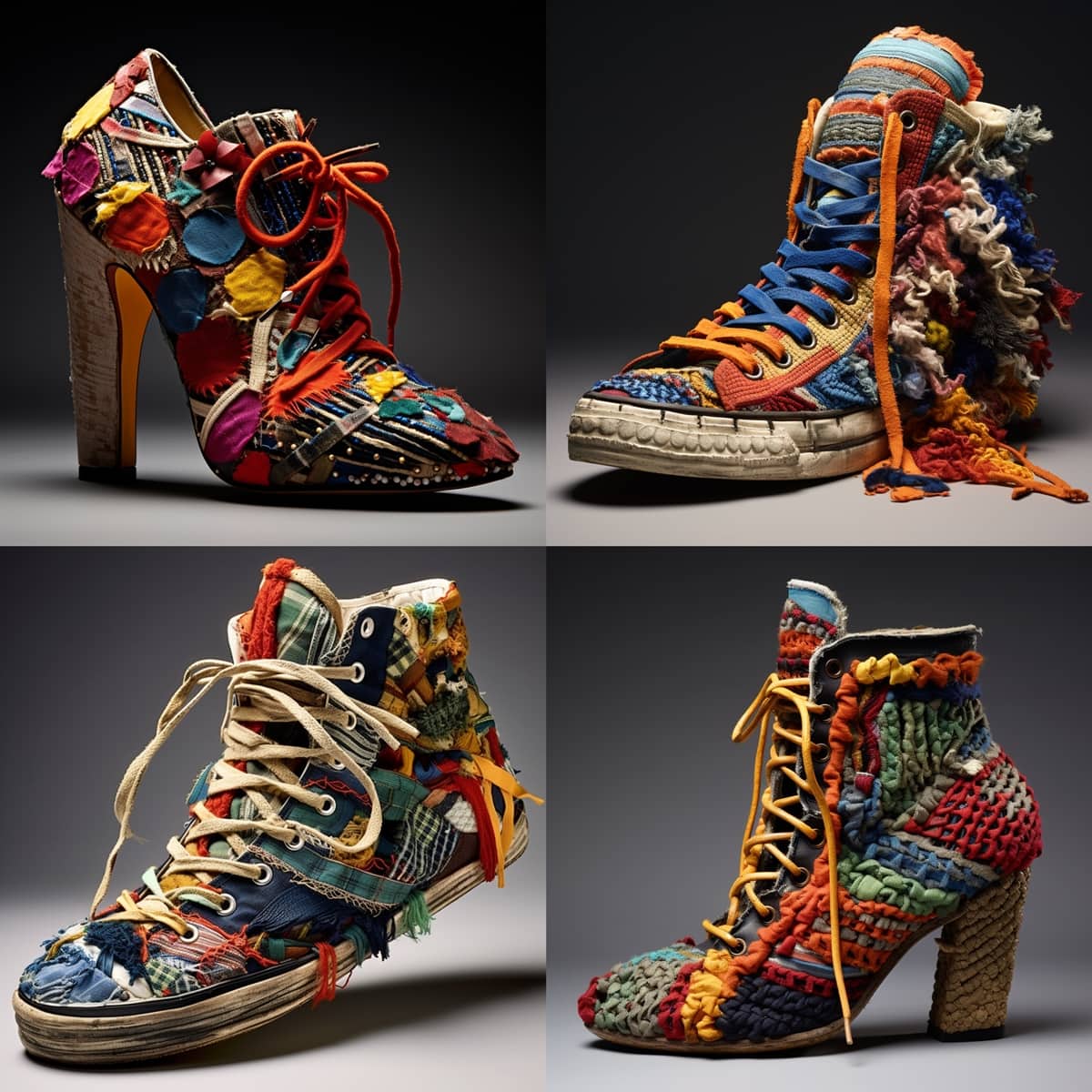
In the world of textiles, fabric weight is measured in denier, a unit representing the mass per 9,000 meters of thread. One denier equals one gram per 9,000 meters. Lighter fabrics typically fall around 110 deniers, while heavier fabrics, like those commonly used in traditional shoes, range from 420 deniers to 600 deniers.
1. Braided Shoes: From Espadrilles to Chelsea Boots
Have you got a pair of espadrilles in your closet? These ‘it shoes’ are typically worn in summer and have become a must-have in recent seasons. They’re made using a distinctive braiding material similar to a rope.
It’s a casual material that you can find in flat espadrille shoes and occasionally high-heeled styles. The braided material is usually reserved for the sole, often giving the shoes a platform sole, while cotton or canvas is used for the upper.

Another type of ‘braided’ material that you’ll find is braided leather. While it looks similar to espadrilles, it’s typically leather-made to create shoes like Chelsea boots and loafers.
Braiding gives the leather a unique appearance and creates a vintage-inspired aesthetic. The braiding is held in place with a backing, meaning you don’t have to worry about the braiding moving and creating gaps.
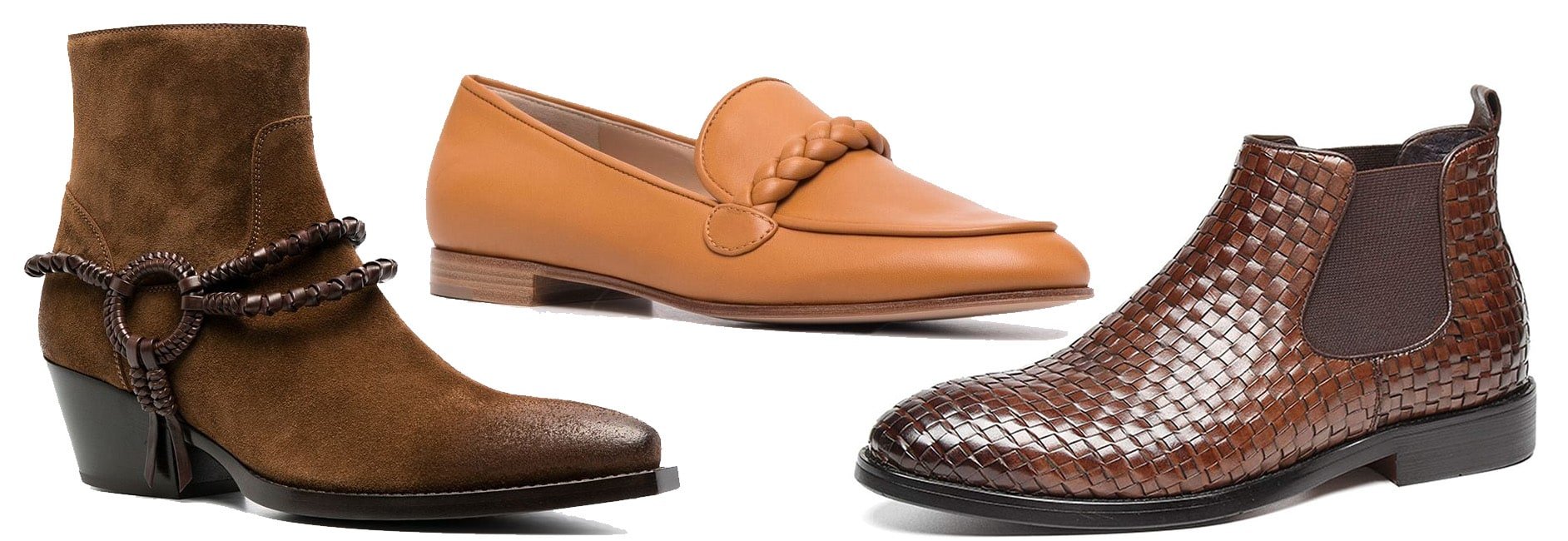
Braiding adds a distinctive texture to your shoes and can take a casual silhouette and elevate it for a more formal look.
2. Canvas Shoes: The Minimalist Sneaker Staple
What makes canvas unique is that it’s a shoe material made using hemp. Along with shoes, you’ll find this cloth material used to make everything from tents to tote bags and homeware.
This minimalistic material has found its niche within the casual footwear industry. You’ll usually find canvas material with sneakers and summer shoes. Most shoes with a canvas upper have a rubber sole for extra wearability and added durability.
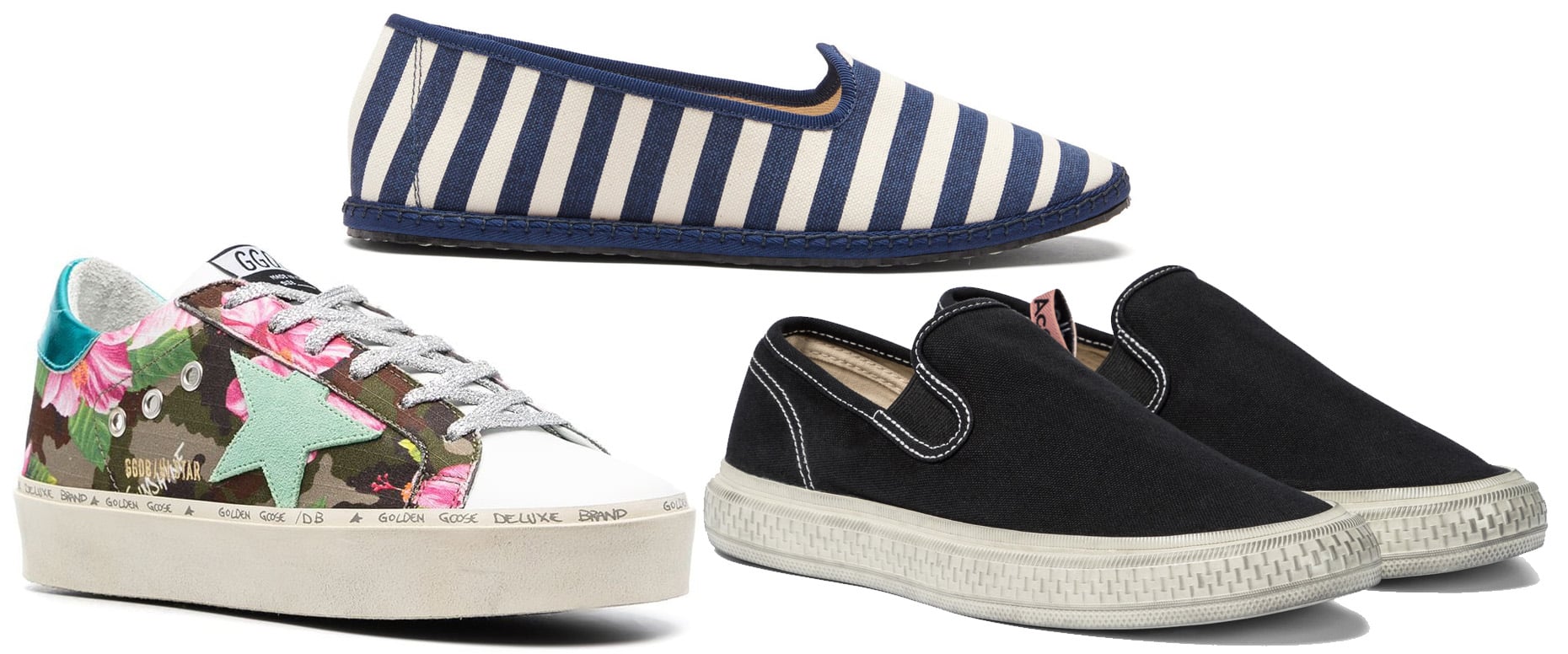
Canvas shoes are fuss-free and low maintenance, making them ideal for anyone who wants easy-going shoes to wear every day. The benefit of canvas shoes is that you can throw them into the washing machine if they get dirty, making them ideal for all-day wear.
With growing environmental awareness, canvas is a popular choice for those seeking sustainable fashion. It’s often made from natural fibers, which are biodegradable and have a lower environmental impact compared to synthetic materials.
One thing to consider with canvas is that it does not retain its initial shape and eventually wears down and becomes flat. You can remedy this by placing shoehorns into your canvas shoes when you’re not wearing them to help maintain their shape.
3. Cork Shoes: The Sustainable Vegan Alternative to Leather
If you’re looking to build a sustainable closet, cork is a material you want to be looking out for when shoe shopping. It’s a vegan alternative to leather, giving you the same look and unique characteristics of leather.
Like a fine wine or a cherished leather jacket, cork shoes have the unique ability to evolve and grow more character with time. This remarkable material, known for its sustainability and lightweight comfort, also boasts a dynamic aesthetic quality – it ages gracefully, developing a rich, vintage patina that tells its own story.

Cork is becoming an increasingly popular shoe material due to its limited environmental impact. Cork comes from the bark of an oak tree, which renews its bark following every harvest, allowing it to keep growing.
While cork can be used instead of leather for almost every type of shoe, it’s a popular choice for sneakers. Cork shoes are guaranteed to be comfortable and perfect for anyone living an urban lifestyle.
4. Leather Shoes: The Go-to Shoe for Durability and Style
The most common material used for shoes is cow leather. It’s used for its durability and stretchability while also being available in different styles and colors.
The beauty of leather shoes is that they offer breathability and mold to your feet over time for a comfortable fit. While you may need to wear them in, these leather shoes will quickly become your go-to.
Leather is considered a ‘living’ material with its own unique characteristics and imperfections. Just like leather bags, leather shoes can take on a life of their own.
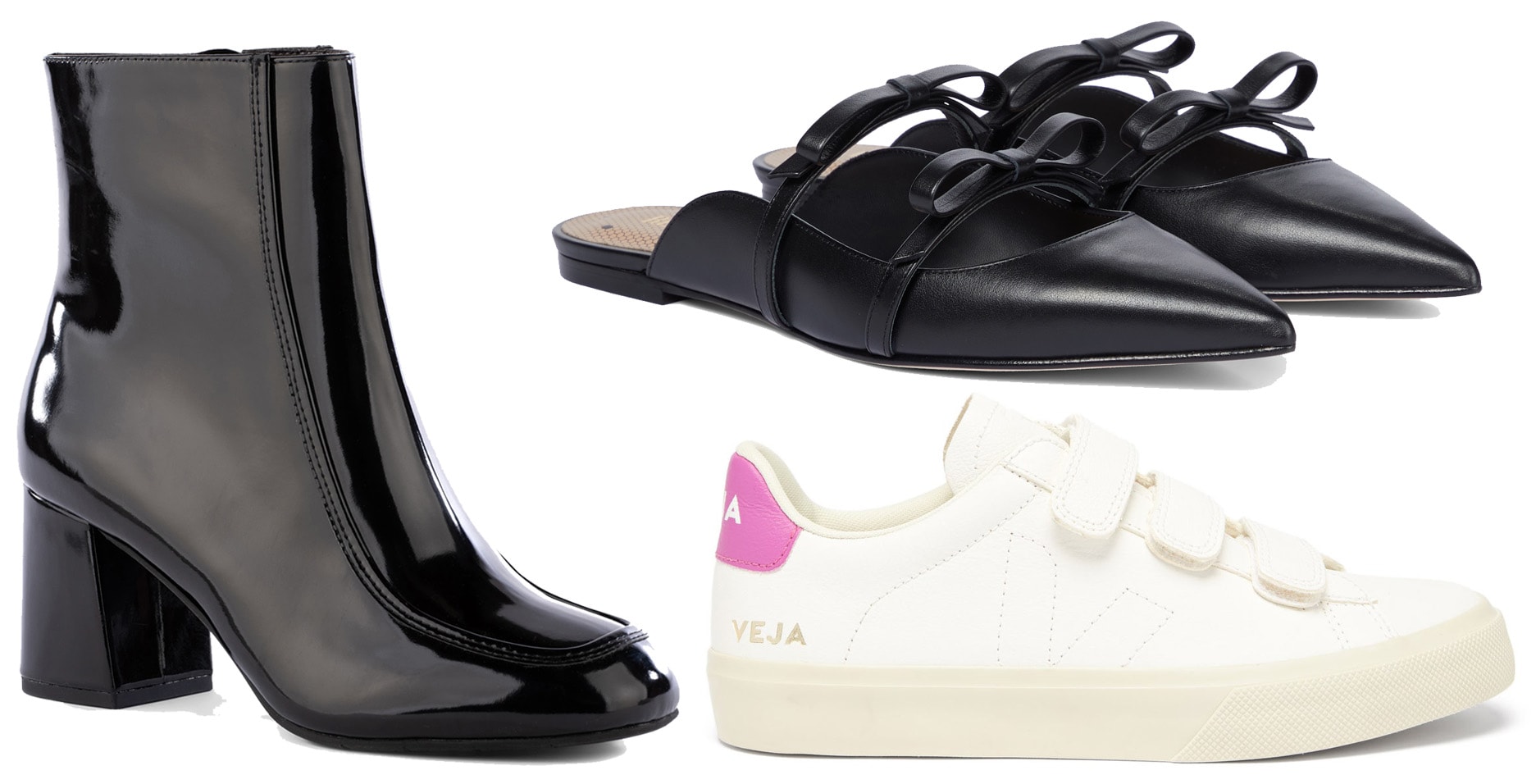
While most leather used for shoes is still the traditional type, vegan leather is becoming a popular alternative. If you want the look and feel of traditional leather without using an animal product, the vegan alternative will be right up your street.
When buying leather shoes, it’s worth checking if the leather has been given a waterproof or water-resistant treatment to prevent damage.
Traditional leather usually comes with a high price tag, while man-made vegan leather is often more affordable.
5. Nylon Shoes: A Designer’s Favorite for Its Versatility
Nylon is a man-made textile that is a go-to choice for designers who want to add a pop of color or patterns to their designs.
You can find nylon in the shoe’s interior or outer design to give it a distinctive look. Nylon is popular for summer shoes as it is lightweight and durable.
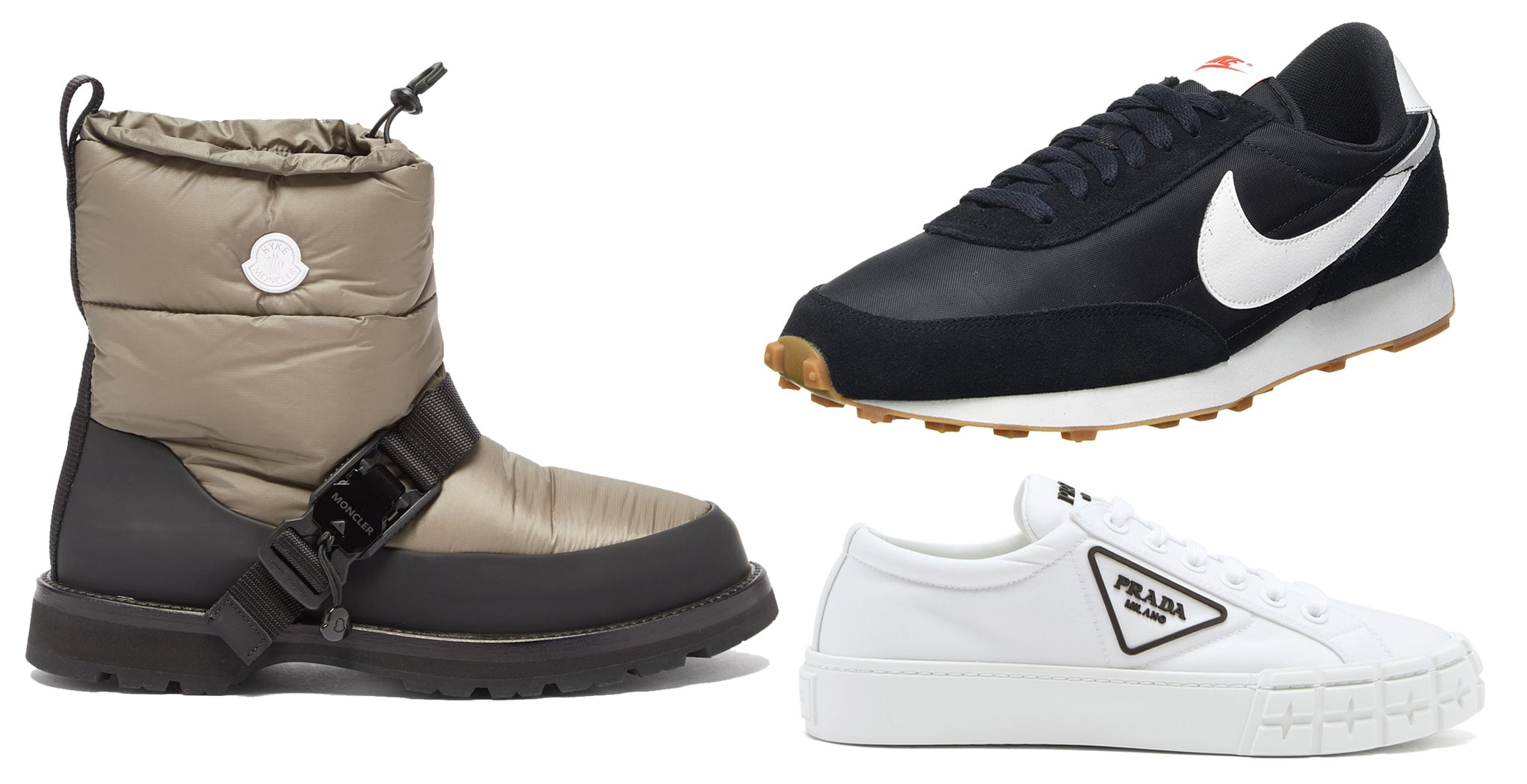
If you’re a sneaker fan, the chances are that you’ve come across nylon sneakers – you probably have a few sitting in your closet. The material changed the game by offering breathability, flexibility, and form.
Nike was one of the first sneaker brands to introduce nylon into their sneakers, quickly followed by Adidas.
As a synthetic fabric, nylon has allowed sneaker designers to create single-piece uppers for their sneakers to develop a seamless design. While nylon was the world’s first synthetic textile, it remains the go-to choice for thousands of sneaker and footwear brands.
6. Neoprene Shoes: Practical, Versatile, and Comfortable
Another material you’ll typically find in sneakers is neoprene, which also appears in boots and wet shoes. The appeal of neoprene comes from its ability to keep your feet warm when in water.
It’s ideal for use on winter shoes or specialist shoes designed for swimming or surfing. Neoprene is both practical and versatile without compromising on comfort.
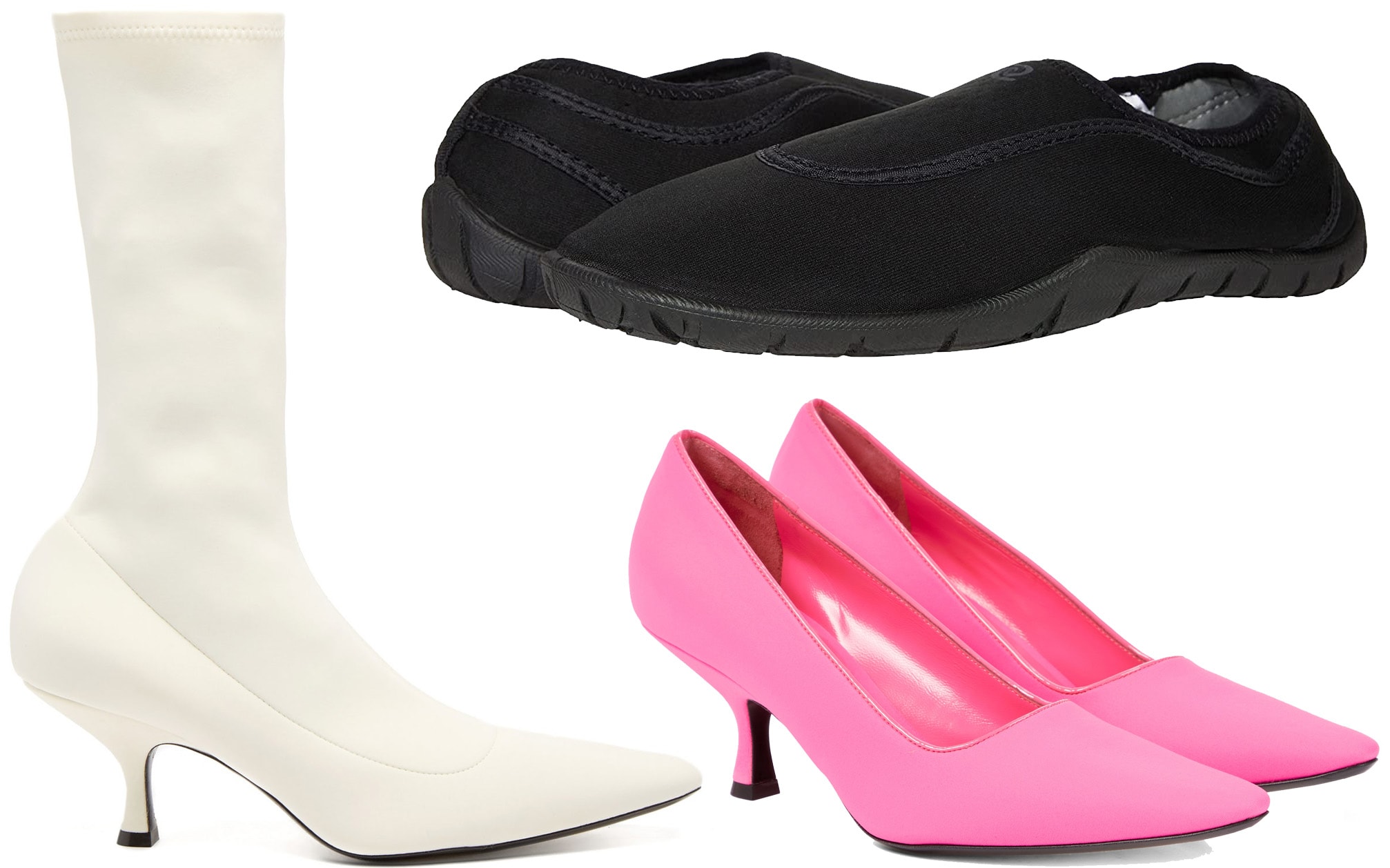
If you live in a colder climate, neoprene is a material to look out for when choosing shoes, as it can help regulate your body temperature by keeping you warm.
One thing to consider is that neoprene does not stretch, meaning you’ll need to choose the right size as the shoes won’t stretch when you’re taking them on and off.
While neoprene is famous for being used in scuba diving shoes, you can also find it in avant-garde footwear. If you’re planning on spending your summer at the beach, neoprene will make your shoe water, weather, and UV-resistant.
Another thing to consider is that neoprene is not a breathable fabric and cannot be cleaned in your washing machine.
7. Lycra Shoes: The Stretchy and Durable Shoe for All-Day Wear
Lycra is another popular man-made textile you’ll often find in activewear and sporting shoes. It’s commonly used to give shoes an extra stretch or to make them more comfortable.
If you’re looking for shoes that can withstand all-day wear, lycra is a material that should be at the top of your list.
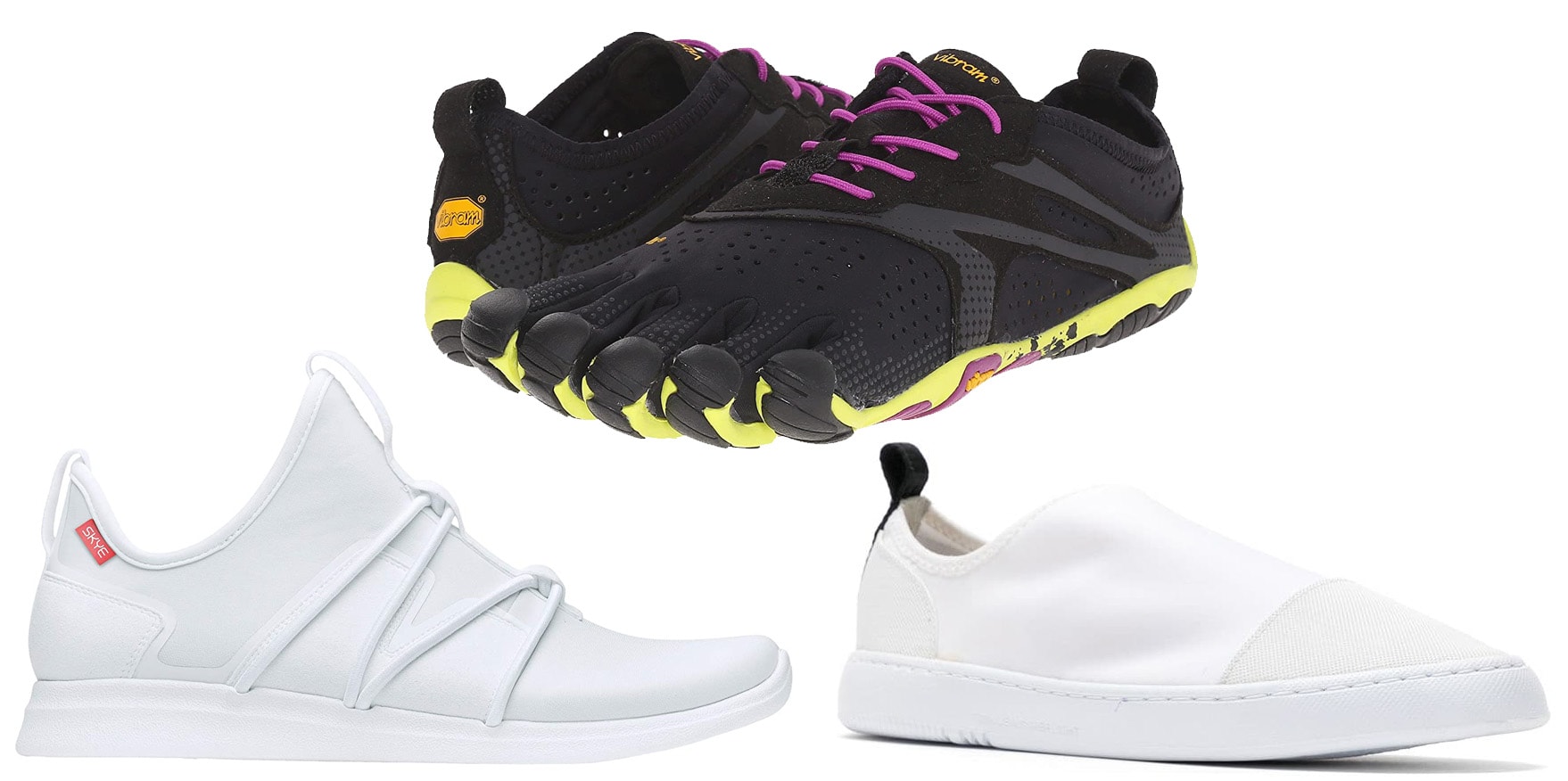
If you’re a keen footwear aficionado, you might have spotted that lycra is often added to leather shoes to help give them a stretchable element.
This material is often used with dance shoes as they are lightweight while being soft against your feet.
8. Silk Shoes: Beyond the Ballerina’s Pointe
When we think of silk shoes, pointe shoes instantly come to mind. You don’t have to be a ballerina to appreciate silk shoes. In the 19th century, silk was used for uppers, while leather was used to create the interior and sole of the shoe.
Silk is used to create shoe uppers by spinning thin silk threads into fibers, creating a distinctive shiny appearance with a soft hue.
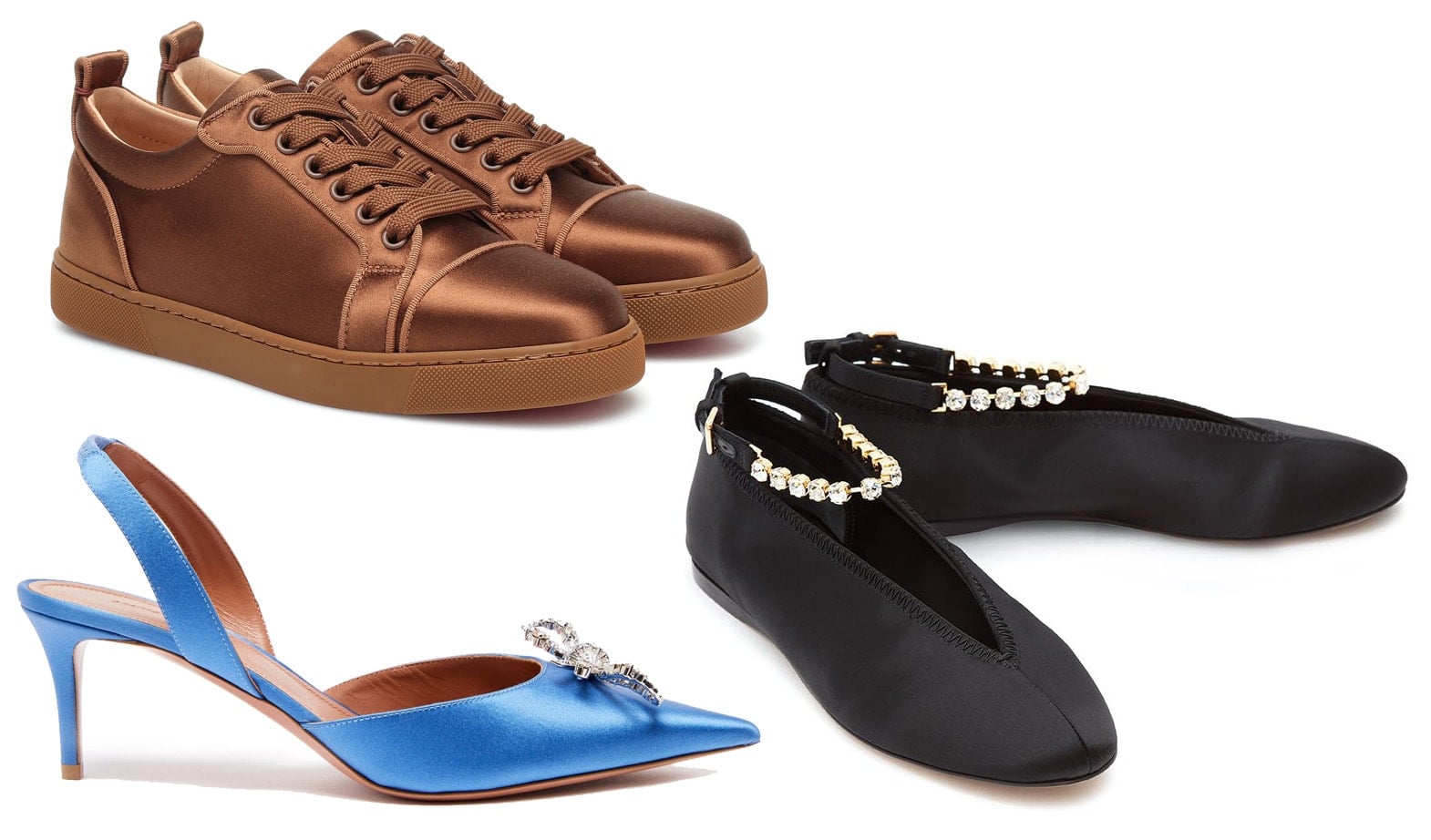
As a natural material, silk is considered a luxury within the footwear industry and often appears in designer shoes. Outside of pointe shoes, you’ll most commonly see silk in bridal shoes, giving them a luxurious hue and light color.
Silk shoes are more common than you think. In 2017, Adidas introduced biodegradable shoes made using silk, showing that it’s not just ballerinas who can benefit from the softness of silk.
9. Jacquard Shoes: A Timeless and Feminine Luxury
Jacquard is a versatile fabric you’ll see everywhere, from upholstery to home décor and clothing. It’s typically used to create utilitarian footwear as it offers durability and stretch.
One thing to keep in mind is that jacquard is considered a luxury material as it is woven on a loom, making it a costly and timely material to create.
If you want elevated footwear with a timeless aesthetic, jacquard is one material that you want to be on the lookout for.
It offers intricate patterns, such as brocades and damasks, that are ideal for anyone who wants to incorporate a feminine touch into their footwear closet.
The material rose to popularity in the 18th century and maintains its Parisian aesthetic to this day.
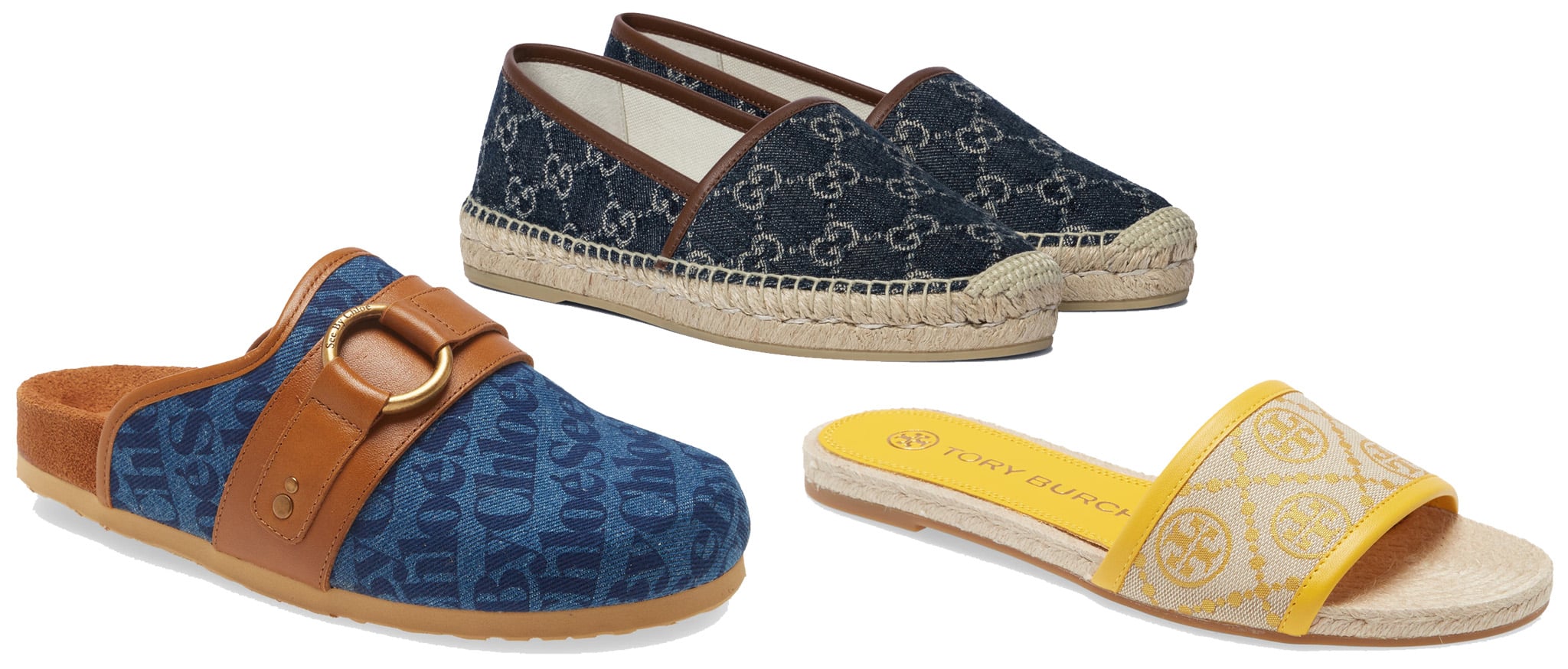
Jacquard is popularly used to create everything from kitten heels to mules and loafers, allowing designers to incorporate bright patterns into their designs. The pattern is incorporated into the weave of the fabric.
While cheaper fabrics choose to print or dye the pattern into the fabric, jacquard material incorporates the pattern directly into the material.
Today, you’re spoilt for choice with thousands of different patterns and prints as technology evolves to streamline the production of jacquard fabrics.
10. Velvet Shoes: Elevate Your Look With a Touch of Luxury
If you’re a fan of loafers, chances are you’ve seen velvet shoes. This elevated material appears everywhere, from casual loafers to block heels. It’s a go-to material for party shoes or ones for special occasions.
It’s soft against your skin and adds an instant touch of elegance to any outfit.
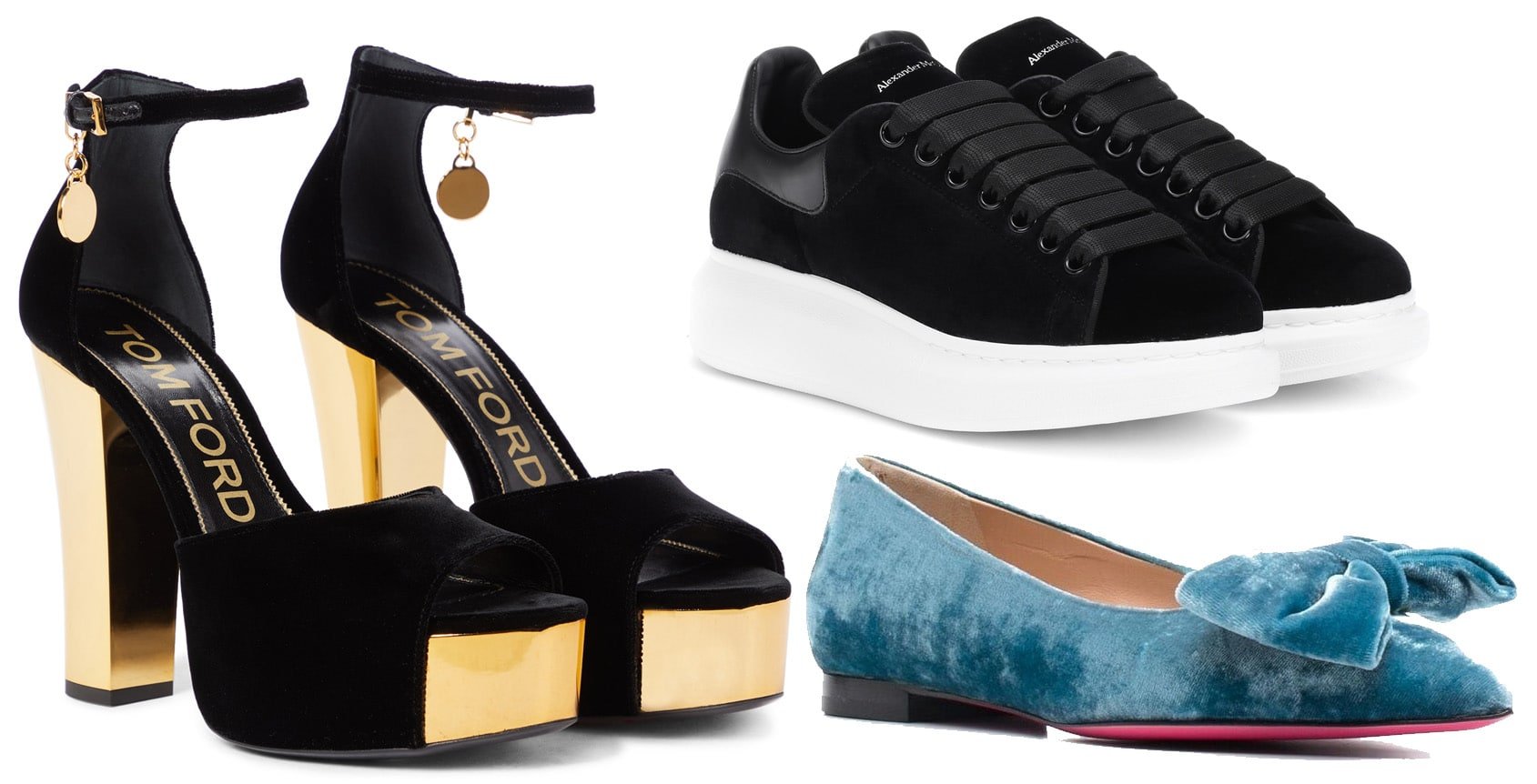
Velvet uses natural and synthetic fibers and offers breathability without too much stretch. While you might be used to seeing velvet in evening wear and home décor, it’s having a resurgence in the world of footwear.
It’s worth considering the maintenance that comes with velvet shoes. You’ll want to avoid getting them wet, and they’ll require regular cleaning after every wear.
It’s also a good idea to invest in a protective coating to spray over your velvet shoes before wearing them for the first time.
11. Raffia Shoes: The Unexpected Summer Staple That’s Here to Stay
Another unexpected material for shoes is raffia. The raffia shoe trend was booming this summer, and we expect it to re-emerge in the coming years.
Everyone from Bottega Veneta to Chanel and H&M comes out with raffia shoes in summer. The material screams resort wear and is a go-to choice for anyone jetting off on a tropical vacation.

While raffia is traditionally used to create sandals or beach shoes, the material is starting to appear more in stilettoes and mules. The material is derived from palm trees and gives any outfit a whimsical feel, whether you choose sneakers, block heels, or wedge sandals.
12. Denim Footwear: Blending Durability with Trendy Style
Denim, a sturdy cotton twill fabric, is a versatile material that can be used to create a variety of clothing and accessories.
While denim is most commonly associated with jeans, it is also an excellent shoe material. Denim shoes offer a unique blend of durability and casual style, making them a great choice for various outfits and occasions.
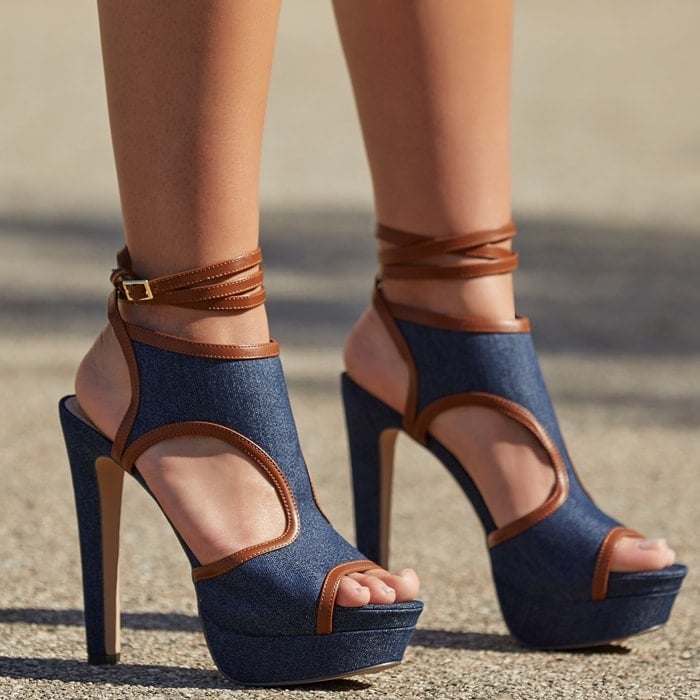
Denim shoes come in various styles, including sneakers, flats, and high heels. Designers often play with different washes and shades of denim, from light to dark, sometimes incorporating distressed or patterned denim for added flair.
With growing interest in sustainable fashion, some brands now offer denim shoes made from recycled jeans, contributing to an eco-friendly fashion movement.
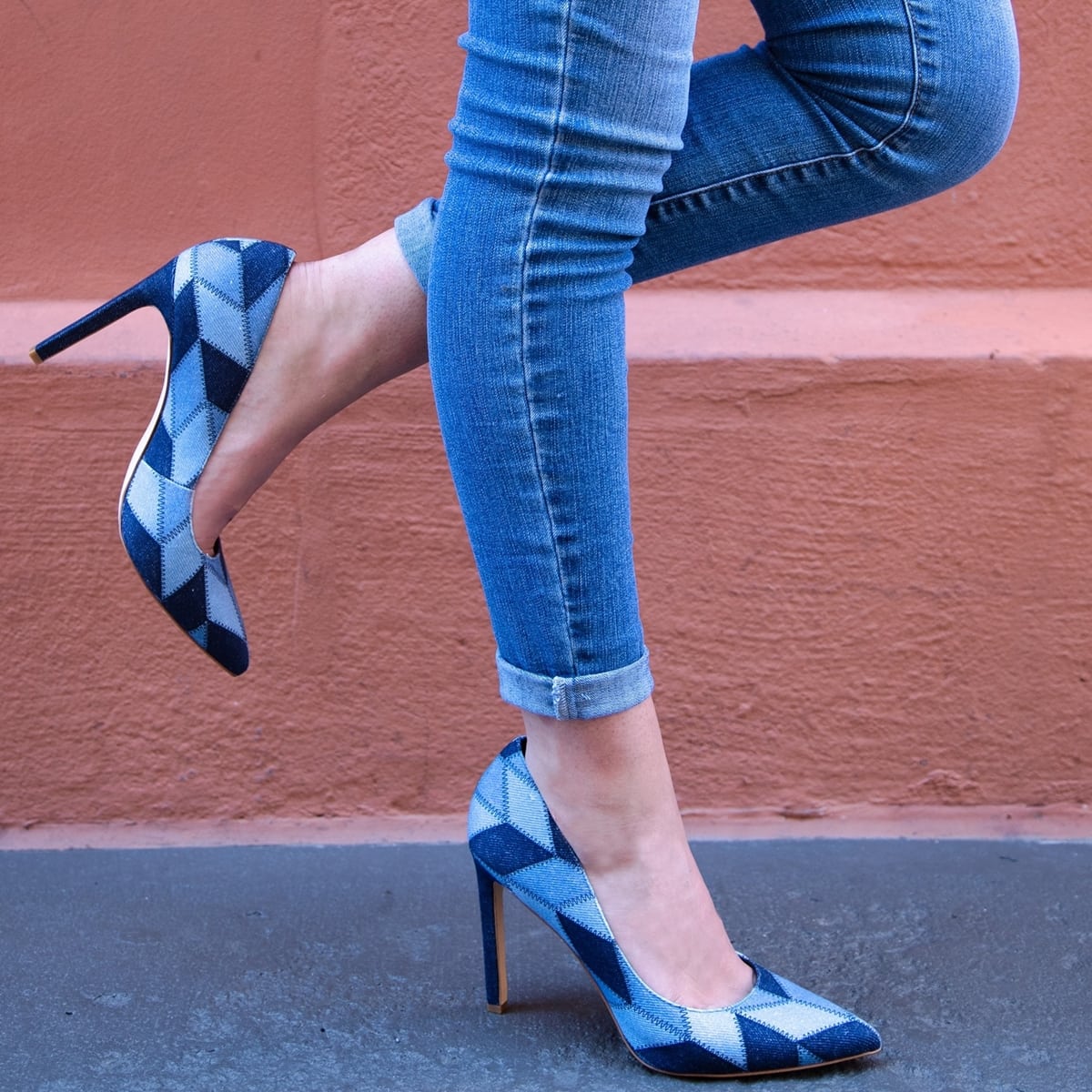
What is the best type of material for shoes? The answer is complicated. It will depend on what shoes you’re buying and where and when you want to wear them.
It’s always worth considering the type of shoe when choosing which material to look out for. This ultimate guide brings you one step closer to finding your next shoes.
